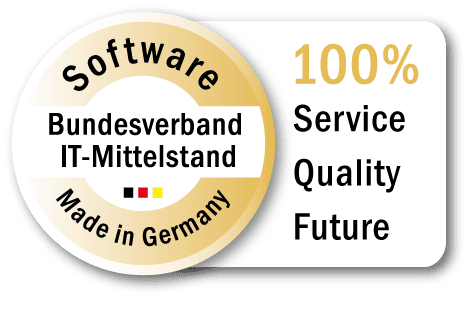InfluxDB plays a crucial role in the efficient storage and retrieval of continuously recorded time-series data. With increasing connectivity in production and the associated rise in time series data, InfluxDB is also increasingly being used in manufacturing companies, for example to store machine and sensor data. In this article, we look at the differences between relational and time series data, the reasons for using time series databases and the specific advantages of InfluxDB.
What is influxDB?
InfluxDB is a powerful open source time series database. It has been specially developed and optimized for the efficient storage and retrieval of time series data. Time series data are data points that are time-stamped and recorded continuously over time. This type of data is widely used in many applications and industries, including factory automation (e.g. sensor or machine data).
Difference between relational and time series data
The main difference between relational and time series data lies in their structure and organization. Relational databases organize information based on tables with fixed relationships between data sets. In contrast, time series data points capture information chronologically over a period of time. In time series databases such as InfluxDB, data is organized into “measurements”, with each “measurement” containing time-stamped tuples of timestamp and value. This structure enables efficient storage and retrieval of continuous time histories.
Why use time series databases to store machine and sensor data?
Time series databases specialize in processing data quickly and efficiently over time. They offer a constant input speed. Optimized for fast indexing of aggregated data over time, they enable stable performance. This is particularly important in applications with continuous data growth. In contrast, relational databases become slower as the amount of data increases due to indexes.
The advantages of InfluxDB for storing machine and sensor data
InfluxDB is characterized by speed, scalability and a simple query language. This results in the following advantages for the industrial context, among others:
- Efficient storage of time series data: InfluxDB enables the efficient storage of time series data with minimal storage space requirements. At the same time, the database allows large volumes of data to be recorded and retrieved quickly.
- Time series data model: InfluxDB uses a special data model for time series data that enables efficient queries and aggregations. This is particularly useful for analyzing historical data and identifying trends.
- Scalability: InfluxDB is horizontally scalable, i.e. also suitable for environments with increasing requirements. This is an advantage because factories are dynamic and a large number of new data sources, for example, can be easily integrated.
Use-cases in the factory
InfluxDB is successfully used in scenarios that require the continuous collection and storage of data over a longer period of time. This includes areas such as monitoring server performance, recording sensor data, monitoring the status of machines and much more. Here are a few examples:
- Real-time monitoring: You can record data from sensors and machines in real time in InfluxDB and analyze it with i-flow. This enables the immediate detection of deviations and problems in production.
- Condition monitoring: By continuously storing machine data, InfluxDB enables condition monitoring to monitor the condition of devices and systems in real time and identify anomalies or potential maintenance requirements at an early stage.
- Historical analysis: InfluxDB automatically stores and optionally aggregates data over time, making it possible to perform historical analysis and identify trends in production.
i-flow and InfluxDB – a powerful combination
i-flow and InfluxDB offer a powerful combination to build a reliable, secure and high-performance data infrastructure for time series data in the factory. i-flow serves as an interface to harmonize heterogeneous data from production systems and transfer it to the influxDB database. OT data (e.g. process or sensor data) can be normalized and enriched with data from other systems (e.g. control systems, sensors, databases).
While i-flow serves as the link and data processor between IT and production systems, influxDB provides the robust and secure database server for time series data.


